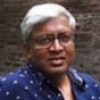India's Political Journey From Unipolar To Multipolar Is A Welcome Change
Indian politics is no longer unipolar. One can define it as bipolar or multipolar, depending on where one is gazing at the events. Modi’s biggest success was to change the pole position of Indian politics. Before he took command of the BJP, the Congress was the centre of Indian politics, and the BJP was trying to dislodge it. But once Modi became the prime minister with 282 seats in the Lok Sabha, he emerged as the centre, and the Congress moved to the periphery, with the least number of MPs in the lower house. But post-2024 parliamentary elections, the pendulum has moved to normalcy, in which none of the parties can dominate the political scene single-handedly.
Modi, in his third term, is much weaker as the leader and as head of the government. Rahul has emerged as a powerful second pole. Though he does not have the arithmetic on his own to dictate terms to the government, the combined strength of the opposition makes him equally powerful, if not more than, the Prime Minister.
The BJP has 240 seats, and to run the government, it needs to have the support of leaders like Nitish Kumar, Chandra Babu Naidu, and Chirag Paswan, which makes Modi and the government vulnerable. On the other hand, the opposition with 234 seats is close behind. And Rahul Gandhi, with 99 seats, legitimately became the Leader of the Opposition, and that was the beginning of the crumbling of the citadel. Rahul turned out to be a very strong opposition leader, which the........






















 Toi Staff
Toi Staff Gideon Levy
Gideon Levy Tarik Cyril Amar
Tarik Cyril Amar Sabine Sterk
Sabine Sterk Stefano Lusa
Stefano Lusa Mort Laitner
Mort Laitner Mark Travers Ph.d
Mark Travers Ph.d Ellen Ginsberg Simon
Ellen Ginsberg Simon Gilles Touboul
Gilles Touboul John Nosta
John Nosta
